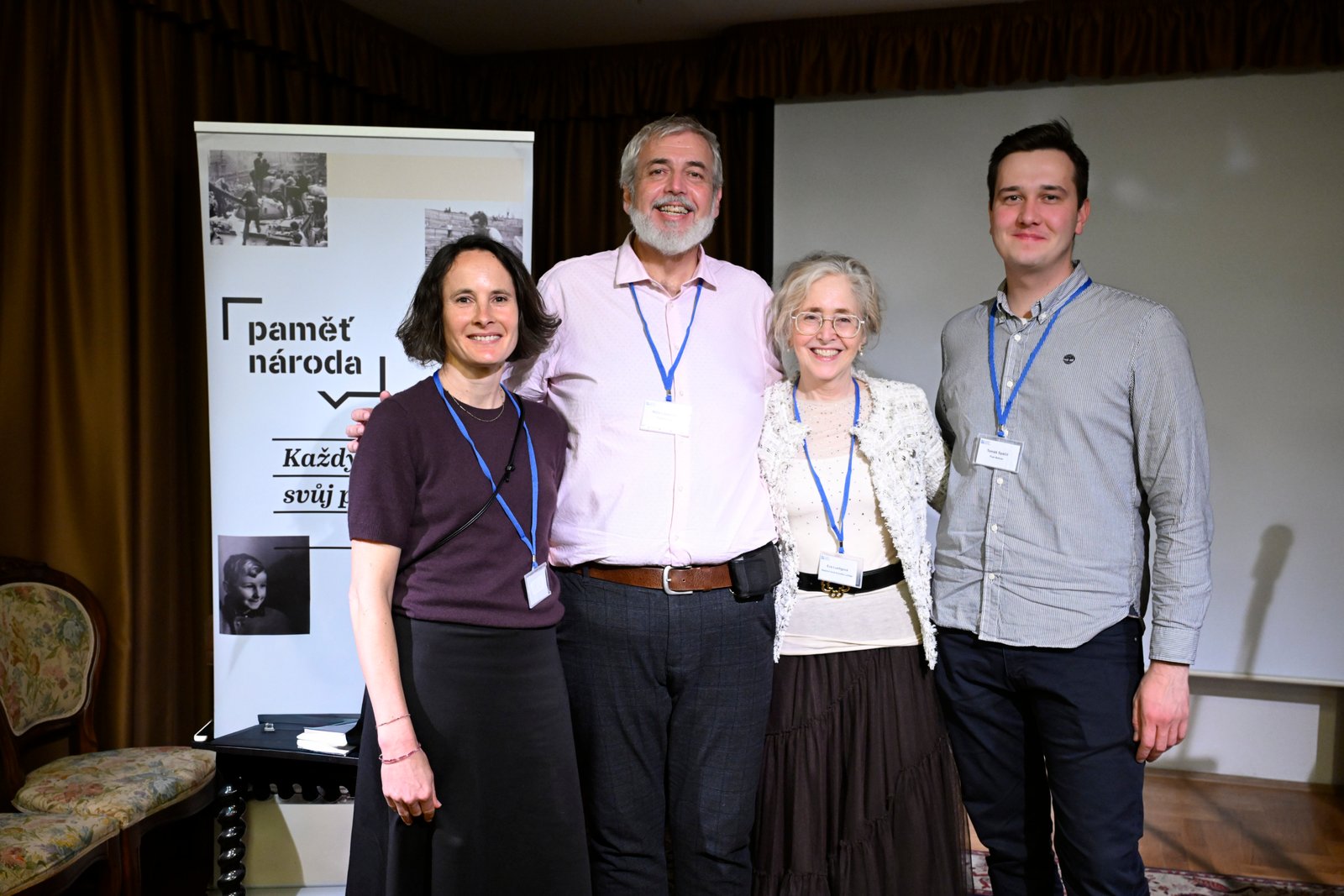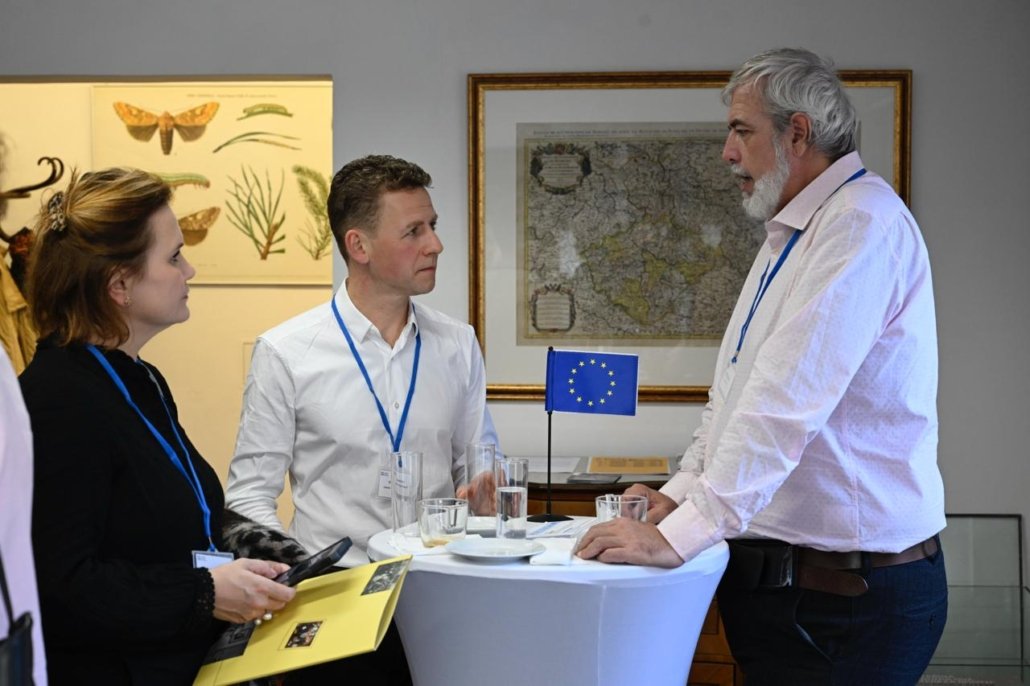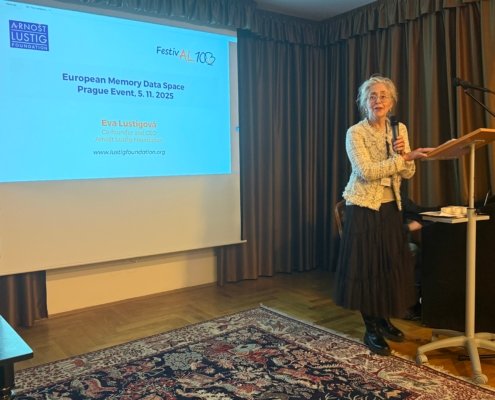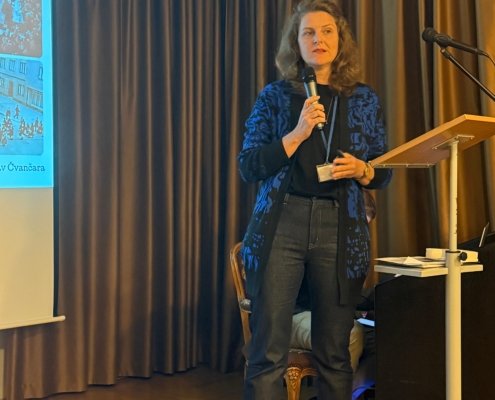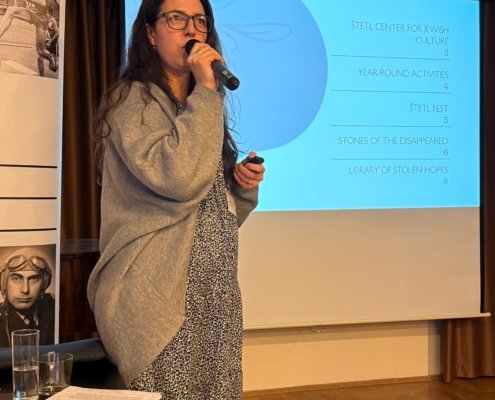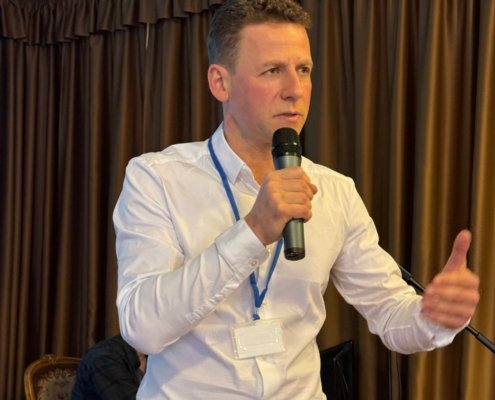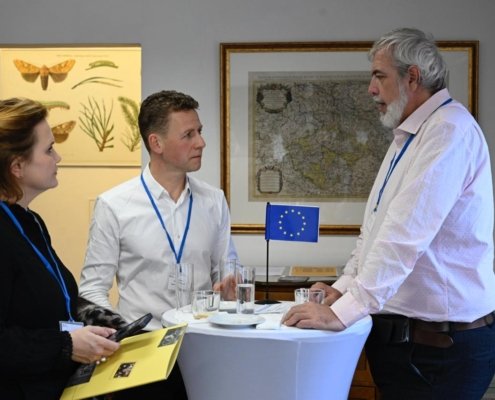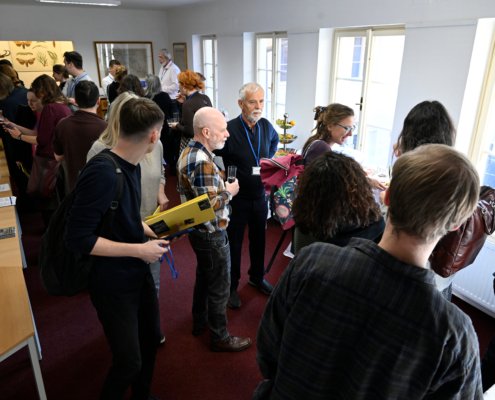Stolpersteine and Data:
Holocaust Remembrance in Czechia
Miško Stanišić participated as a keynote speaker in the event “Stolpersteine and Data: Holocaust Remembrance in Czechia”, held on November 5, 2025, at the National Pedagogical Museum in Prague. The workshop was organized by Post Bellum, within the European Memory Data Space (EMDS) – Blueprint project, in partnership with Jewish Heritage Network (JHN) and Terraforming.
The event brought together Czech memory institutions, educators, Stolpersteine initiatives, museums, civil society organizations, and local actors to discuss how digital archives and memory data can support Holocaust education and strengthen local remembrance culture. The gathering offered a vital opportunity to share practices, challenges, and expectations regarding the role of digital tools in preserving and transmitting historical memory.
Eva Lustigová, Czech writer, documentary filmmaker, and founder and executive director of the Arnošt Lustig Foundation, announced the Arnošt Lustig FestivAL100 next year. Her father, Arnošt Lustig, was a Czech Jewish writer, journalist, and Holocaust survivor known for his powerful stories about the Holocaust. He survived the Theresienstadt, Auschwitz, and Buchenwald concentration camps, and his work often focused on the moral strength and resilience of individuals facing extreme adversity.
The future of the digital memory
The program opened with remarks from Pavel Kats (Jewish Heritage Network), who introduced the vision of the future European Memory Data Space. He emphasized the need for a dedicated, ethical, and community-centered digital infrastructure for Holocaust-related data—one that connects diverse archival sources and supports education, research, and commemoration across Europe. Kats also highlighted the significance of local remembrance projects such as the Stolpersteine as essential to shaping a democratic and decentralized memory culture.
In his presentation, Terraforming’s Miško Stanišić reflected on current digital trends in Holocaust education and remembrance culture. He discussed how digital materials and infrastructures can strengthen educational practices, provided they are designed with pedagogy, accessibility, and ethical responsibility at their core. Stanišić underlined the importance of connecting global historical events with local experiences and approaches based on personal stories and place-based learning.
Czech and Slovak experiences
The core of the event consisted of two sessions featuring representatives of Czech and Slovak memory institutions who shared concrete use cases, challenges, and needs from their work.
The discussion highlighted several shared priorities: improving access to archival materials, developing sustainable digital infrastructures, and supporting collaboration among institutions, educators, and local remembrance efforts. Participants also emphasized the importance of contextualization and careful interpretation when using digital resources in education.
The event concluded with a moderated discussion and informal networking, allowing participants to identify areas for long-term collaboration and outline practical needs that will inform the further development of the EMDS Blueprint.
Thank you
We would like to thank the partners from the European Memory Data Space for organizing this event. Special thanks to Eva Mikulášková, coordinator of educational projects and the organization Post Bellum, z. ú.
About the European Memory Data Space (EMDS) – Blueprint Project
EMDS is envisioned as a European data space ecosystem dedicated to Holocaust-related data. It will join the family of European Common Data Spaces and bring together archives, memorials, research centers, and civil society projects across Europe. The EMDS Blueprint phase, funded by the CERV program of the European Commission, includes a series of collaborative workshops across Europe in 2025–26, aimed at developing the conceptual and functional groundwork for the future data space.


